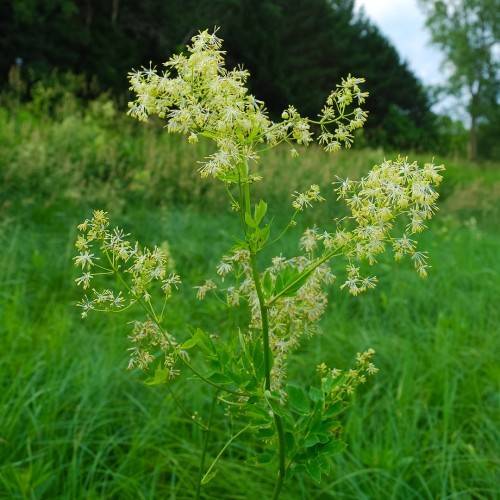
meadow rue
Thalictrum dasycarpum
Cycle:
Herbaceous Perennial
Watering:
Average
Hardiness Zone:
4 - 7
Flowers:
Flowers
Sun:
Full sun,part shade
Leaf:
Yes
Growth Rate:
Low
Maintenance:
Moderate
Care Level:
Medium
watering
Meadow rue (Thalictrum dasycarpum) can be watered once a week when it is actively growing in the spring and summer months. During this time, the soil should be kept moist but not soggy. In periods of extreme heat or drought, it may need to be watered more frequently. When the foliage turns yellow or brown, reduce watering. In the fall and winter months, water only when the soil is completely dry. It should not be watered at all when it is dormant.
sunlight
Meadow Rue (Thalictrum dasycarpum) grows best in full sun to partial shade. It prefers about 4 to 6 hours of direct sunlight each day and will tolerate partial shade. It should be placed in an area where it gets morning sun and afternoon shade or some afternoon shade during the warmest part of the day. Direct sunlight should be avoided in hot, midday sun as the plant may become scorched or stressed.
pruning
Meadow rue (Thalictrum dasycarpum) should be pruned during late winter or early spring, before new growth begins. Prune lightly, taking off only the dead, dying, or overly tall stems. Be sure to cut back old and dead stems to the main crown of the plant, as this will encourage more bushy growth during the upcoming season. You should also remove any weak or slim stems that have fewer blossoms or seed heads. Pruning should be done with hand pruners or shears, or with a hedge trimmer. It's important to leave a few tall stems to maintain seed production and provide additional structure. After pruning, add a thin layer of mulch to the base of the plant to retain soil moisture, provide insulation, and prevent the growth of weeds.
